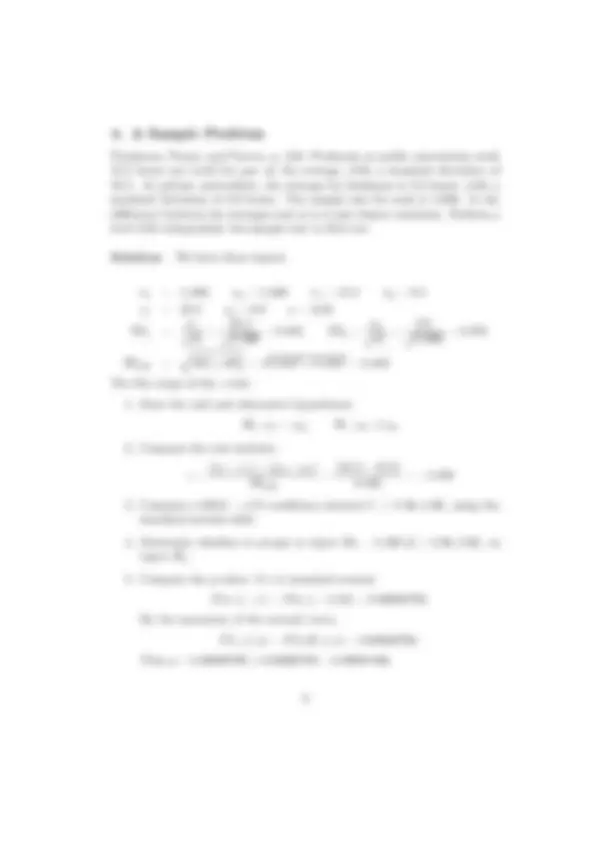



Study with the several resources on Docsity

Earn points by helping other students or get them with a premium plan


Prepare for your exams
Study with the several resources on Docsity

Earn points to download
Earn points by helping other students or get them with a premium plan
Community
Ask the community for help and clear up your study doubts
Discover the best universities in your country according to Docsity users
Free resources
Download our free guides on studying techniques, anxiety management strategies, and thesis advice from Docsity tutors
The independent two-sample z-test, a statistical hypothesis test used to determine if there is a significant difference between the means of two independent groups. The assumptions, inputs, and steps for performing the test, as well as a sample problem and its solution.
Typology: Study notes
1 / 3

This page cannot be seen from the preview
Don't miss anything!


SE 1 =
s 1 √ n 1
and SE 2 =
s 2 √ n 2
H 0 : μ 1 = μ 2 , H 1 : μ 1 6 = μ 2
z =
(¯x 2 − x¯ 1 ) − (μ 2 − μ 1 ) SEdiff
assuming the null hypothesis.
Since we are assuming that n ≥ 30, the sample standard deviations s 1 and s 1 are close approximations to the population standard deviations σ 1 and σ 2 , so we will assume that the population standard deviations are known and equal to the respective sample standard deviations. Furthermore
E(¯x 2 − x¯ 1 ) = E(¯x 2 ) − E(¯x 1 ) = μ 2 − μ 1.
Also, if the two treatment groups are independent,
Var(¯x 2 − ¯x 1 ) = 1^2 · Var(¯x 2 ) + (−1)^2 Var(¯x 1 ) =
σ^22 n 1
σ^21 n 2
the standard deviation of ¯x 2 − x¯ 1 is
SEdiff =
Var(¯x 2 − x¯ 1 ) =
σ 22 n 1
σ 12 n 2
Finally, because the expected value and variance of
z =
(¯x 2 − x¯ 1 ) − (μ 2 − μ 1 ) SE^2 diff
are μ 2 − μ 1 and SE^2 diff, respectively, E(z) = 0 and σz = 1. By the central limit theorem, z ∼ N (0, 1), so we can use the standard normal table to find confidence intervals and p-values for z.